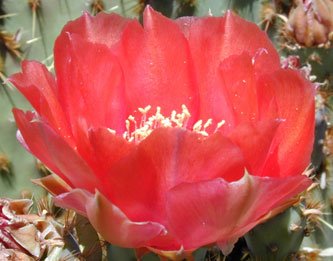On the plus side, Germany has the best hotel beds, the cleanest restrooms (although you have to pay for them much of the time), lavish breakfasts (who knew that liverwurst was so good in the morning?) and those wonderful whole-wheat seeded rolls, not to mention the greatest variety of wursts.
The autobahns, however, just plain suck. There is the myth of no speed limits, but in our experience, there are very few kilometers which are not speed controlled. I don't understand why you can be driving along a wonderful three-lane superhighway with a speed limit of 110, then when the road narrows to two lanes, the speed limit is removed. For maybe 20 km. Something about the traffic engineering philosophy is escaping me here. Furthermore, the autobahns are so clogged with truck traffic that there will essentially be only one lane open for autos. The road surfaces are reminiscent of I-5 in central California where the pavement takes the same beating from big trucks.
I'm always fascinated to read the license plates and see where the trucks come from. About half are from Germany and the rest are split among the former eastern block. You see a lot from Poland and Hungary as well as Romania, Bulgaria and even Russia as well as Turkey. They generally look pretty modern but I wonder what kind of safety regulations some of these countries enforce. At any rate, we found that it is difficult to average more than about 100 on the autobahns, which translates into 66 mph for the metrically challenged among the audience. And the worst traffic tie-ups we've encountered have been in Germany, not once or twice but literally eveytime we get onto the autobahn. Not a selling point for the country. Can someone please tell me where it is that the car magazines go in Germany to test cars, because we never found anywhere that it would be possible except at the Nurburgring race track!
This is not to say that we didn't enjoy ourselves in Germany because we always find a way to have a good time. We rode to the top of the Zugspitze in the Bavarian Alps and enjoyed the view, but frankly after the rest of the Alps, it was a bit of a let-down. We had a beer in Heidelberg and walked around the walls at Rothenburg, but I guess we're just getting jaded because neither impressed us that much. Maybe its getting time to go home. We did enjoy a day in the Black Forest, although the traffic getting there was a nightmare, and a wonderful dish of fresh chanterelles and fresh stuffed raviolis. Yes, we do think about food a lot.
Amusing story: We were in the Garmisch-Partinkirchen area watching the Germany-Portugal match of the World Cup. Suddenly, there was a peal of thunder. I opened the door to the balcony and saw that the sky was full of stars. More thunder, reverberating off the mountains, like shots. I wondered out loud if Austria, just a few miles south, was taking the opportunity to invade while all of Germany was riveted by the match. Then we realized it was July 4th and that the US troops at the nearby recreational facility were celebrating.
The highlight of the country was visiting Brian and Sindhu, a couple we had met at the B&B in Cascais, Portugal near the beginning of the trip. Despite our age difference, the four of us really hit it off, although I'm sure they were quite surprised when we took them up on their offer to visit them. Tiny Sindhu was 8 1/2 months pregnant when we visited but she was still going to yoga classes and riding her bike out to get the morning bread. No wonder she looked wonderful. We had offered to take them out for dinner but she insisted on cooking us an Indian meal which was a welcome change from restaurant food. I was glad she had made it 'mild' because it was about as warm as I like things and absolutely excellent. It was also interesting to visit a 'typical' German home, although this one was built in 1998. Al loves to note the differences in how things are done and they had lots of stories to tell about the whole house buying process. Many thanks to them for their warm welcome.
We generally avoid cities no matter what country we are in but we are here in Nuremburg for the LGB 125th birthday festival. For the non-garden-railroaders in the audience, LGB is a toy company that created the garden railway concept and has an avid following for its products world-wide. The festival included a large expo at the factory which we attended the first day we were here. It was well-organized and included a variety of eating options. One vendor had a whole beef on a spit--I mean a whole beef, not a whole side of beef--from which he was cutting slices for sandwiches. It wasn't Texas BBQ but it was delicious and very tender. We met Dan and Ed, a couple of fellow Phoenix-area garden railroaders and the fellows investigated the entire event while I took frequent breaks in the heat and humidity. The next day, we and Ed took a steam train ride out of the main rail station. It was a pleasure to sit in the first class car and enjoy smooth tracks, so unlike the average American narrow-gauge steam experience. Later we visited the toy museum which has a special room of vintage LGB toys as well as railroads. Today, Al visited the Regio repair facility and the railroad museum.
Tomorrow we leave Germany and I doubt that we will return. The food is good but the country just does not offer the kind of life style that we look for in a vacation spot.

